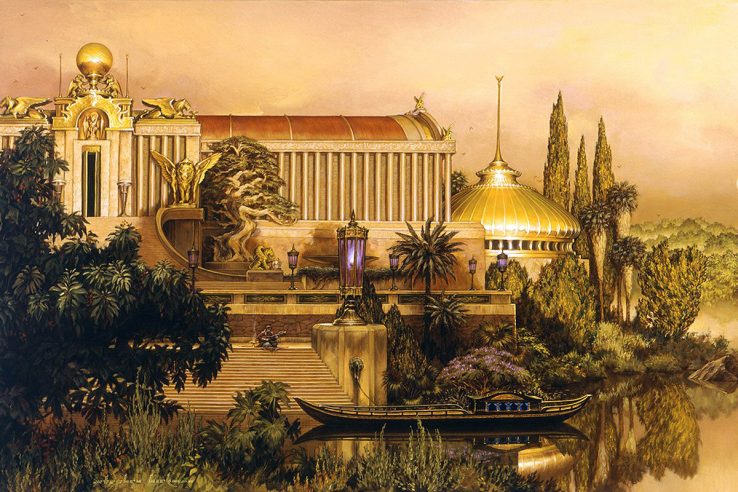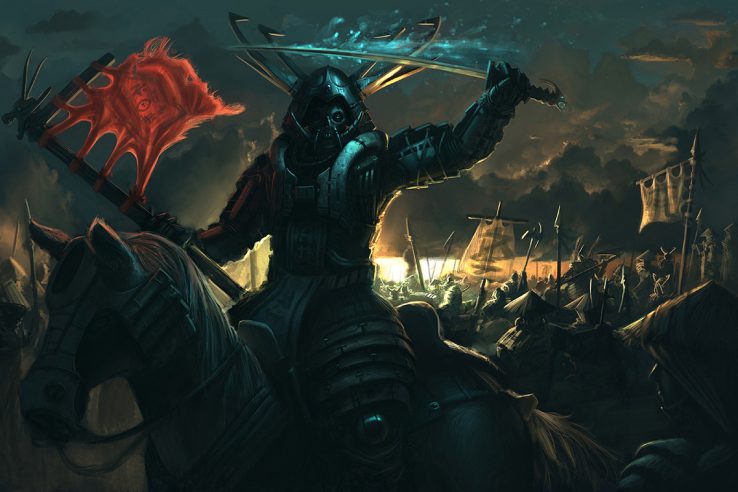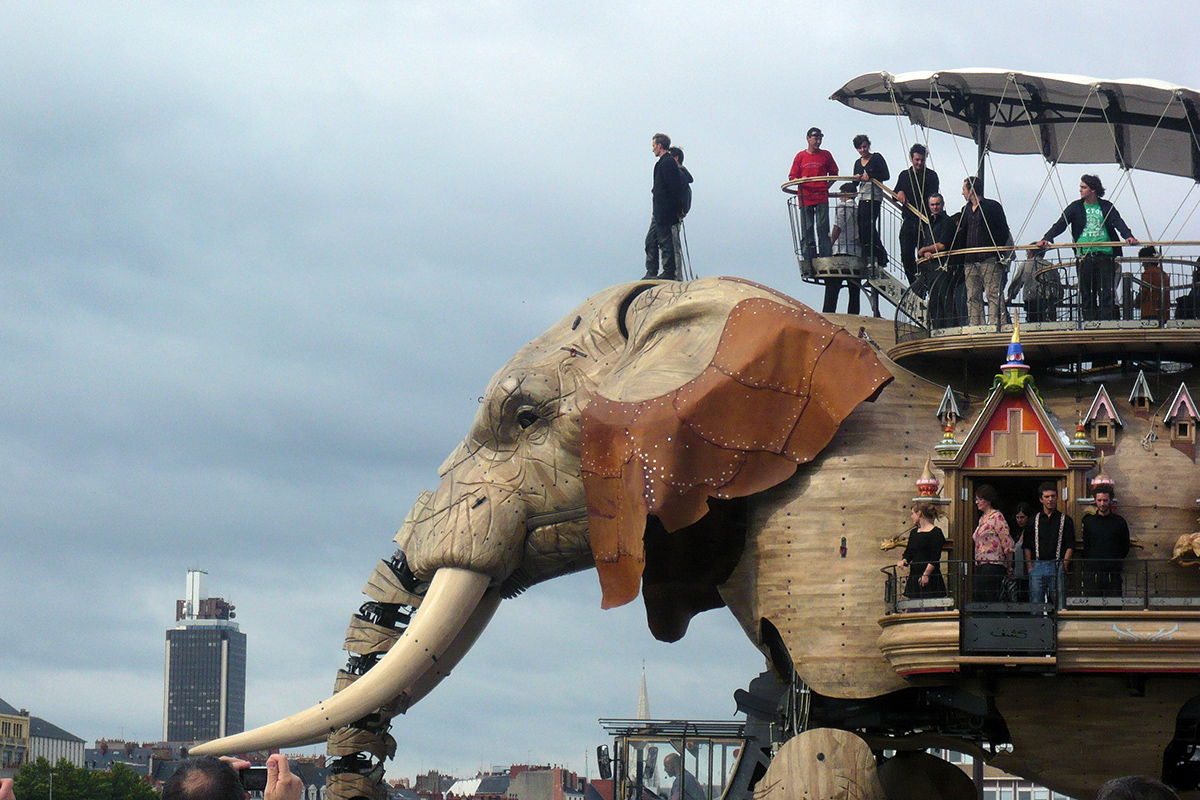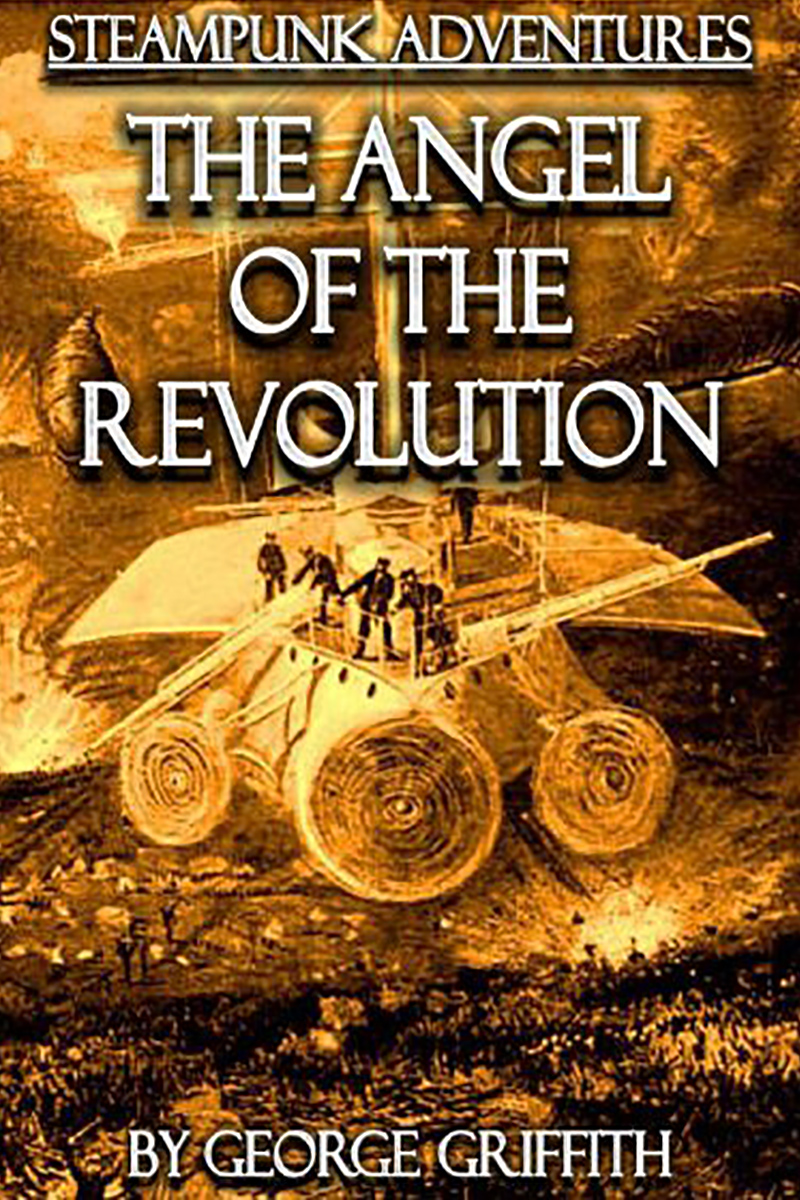This article is outdated. Click here for a more recent take.

With the increasing contact with the East and its ensuing colonization, people in the West became fascinated by this strange new world. For centuries, adventurers, novelists and romantics had been interested in the lands beyond the horizon. Europe had all been explored and people became more and more familiar with the world they lived in. The Orient was still a realm of mystery, inhabited by alien people, exotic and sometimes cruel, with customs that Enlightened Europeans thought of as barbaric; a place where time had stood still.
An age-long Orientalist tradition of those who studied the East has in our times been criticized for its presumed bias and even racism. In the realm of steampunk, however, we can safely recreate the Orient as it was described and depicted by nineteenth-century authors and artists who might never have seen it. All the myths and miracles of the East that enchanted the Victorians can come true.
The Orient
How Westerners perceived the Orient depended very much on where they came from.
For the British, the East was India and the journey there represented an unbroken reminder of British dominion. From Gibraltar to Egypt to Calcutta, Britannia ruled supreme, thus traveling and writing about the lands beyond the Mediterranean meant seeing and describing the accomplishments of Empire.
The French traveler felt lost in the East. Between West Africa and Indochina, France possessed no colonies. Rather the Near East reminded the Frenchman of defeat and humiliation with Napoleon’s desastrous adventure in Egypt still recent.
The French perception of the East was therefore more romantic than the British. It was a place of “memories, suggestive ruins, forgotten secrets, hidden correspondences and an almost virtuosic style of being,” as Edward Said put it in Orientalism (1978).
By the turn of the century, the French had unquestionably lost the colonial race to the British. Their disappointment expressed itself in a greater interest in fantasies and fables than the Orient itself. These were the orientalists seeking a “paradise lost.”
To the nineteenth-century Westerner, the Orient must indeed have seemed a paradise from the paintings and novels that reached him. Those who were able to actually travel eastward were sometimes disappointed reality didn’t live up to the fantasy.
Nonetheless, many adventurers and imperialists fell in love with the East. Its lands, its people and its cultures enamored the Western mind with a strange affection that was often frowned upon by fellow Europeans. Scores of officers “went native” amid bustling bazaars. The dark jungles lurked with mystery and danger. The Orient never lost its charm entirely.
Shogun steampunk

As the realms of the East are all different, so Victoriental steampunk must differ depending on its location.
Where the deserts of Arabia and the mountain ranges of Central Asia evoke visions of ancient castles in fata morgana and deserted monasteries atop lonely barren peaks, the jungles of India and Indochina invite adventurers to search for boobytrapped remains of lost civilizations while temples and palaces loom beyond in the land of Cathay.
Japan is the only non-Western country where steampunk is popular. Some of the genre’s quintessential anime installments were produced there, including Kia Asamiya’s Steam Detectives (1998) and Gonzo’s Last Exile (2003) and Samurai 7 (2004), the latter based on Akira Kurosawa’s renowned 1954 film, Seven Samurai.
But steampunk has moved far beyond the realm of fiction in the Land of the Rising Sun.
Japan was the first Asian country to modernize according to Western standards. Because of its simultaneous devotion to tradition and embrace of modernity and technology, Japan makes for an excellent playground for steampunk fiction.
Similar to steampunk, in Japan “Lolita” and “Aristocrat” fashions evoke the look of times past. Lolita has developed into an entire subculture influenced by nineteenth-century children’s clothing as well as costumes from the Rococo period and elements of Gothic. The Aristocrat, or Madam, fashion draws inspiration from the wardrobes of the Victorian and Edwardian upper class.





